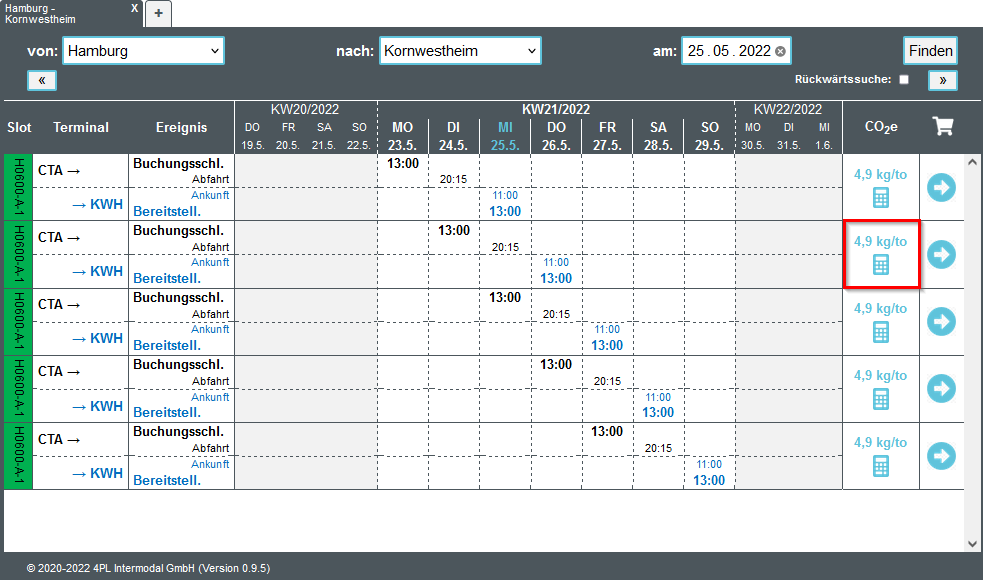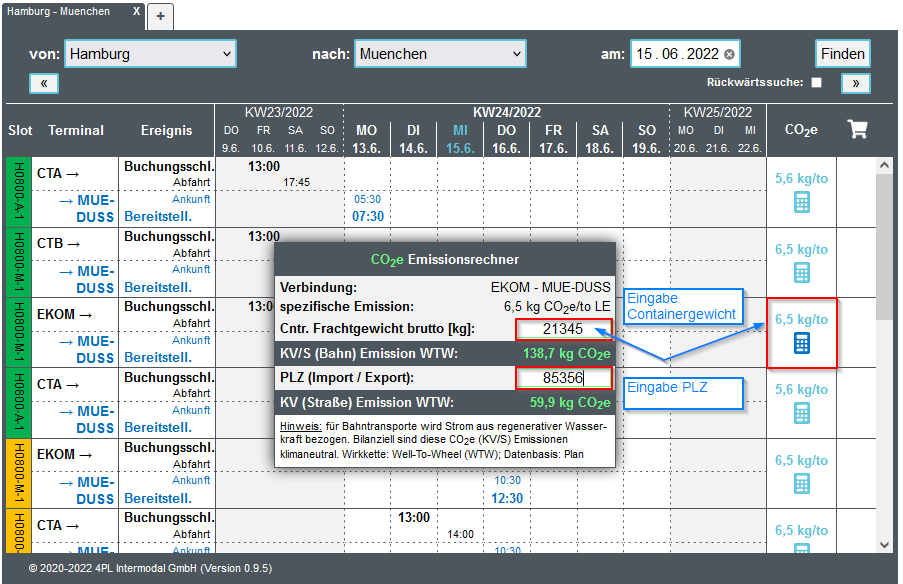The environmental benefits of rail are well known – but exactly how much CO2 does your container actually emit when transported by ERS? The emissions calculator in the timetable provides information on this.
With a "click" you can call up the CO2 value of your consignment. This is our contribution to CO2 transparency and optimisation.
Basics
By breaking down the transport service into individual segments, taking into account the respective energy consumption and emissions, and then adding up the partial results, ERS provides information on the greenhouse gases emitted for the respective relation, in the form of CO2e.
CO2e declaration for terminal-terminal (KV/S) transports
ERS carries out a greenhouse gas (GHG) balance and is oriented towards the specifications of EN 16258, in the effect chain well-to-wheel and on the basis of planning data. The timetable shows per train and terminal-terminal connection:
- the specific value, unit [Kg CO2/to], or, if the container gross is known
- the absolute value unit [Kg CO2/Cnt], by clicking on the calculator and entering the gross weight.


CO2e declaration for terminal-door transports
ERS uses the planning software "PTV Map&Guide" for the road pre- and on-carriage, whose emissions are determined according to the HBEFA standard (Manual for Road Transport Emission Factors, version 3.2 of July 2014).
These values, carbon dioxide (CO2), nitrogen oxides (NOx), nitrous oxide (N2O) and methane (CH4), are combined under the unit of measurement CO2 equivalents (CO2e).
The emission for the road pre-carriage and onward carriage are shown after entering the postcode and refer to the round trip terminal - customer - depot, respectively depot - customer - terminal.
Disclaimer
All results are determined in accordance with the EN 16258 standard and default values according to HBEFA. For further information, please refer to these standards. On request, we can also provide information on e.g. unaccounted processes, methodology, guidelines and general principles. If you want to compare these results with other results calculated according to the standard, special attention should be paid to the individual procedures applied, especially the allocation procedures and the data sources.